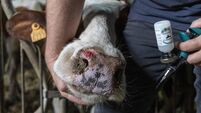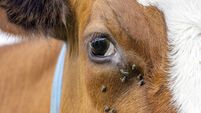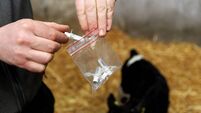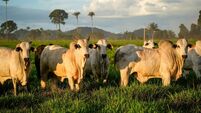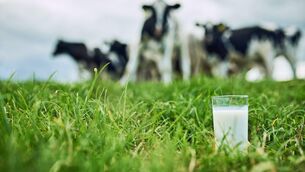Calf pen sizes among recommendations in latest EU review on animal welfare
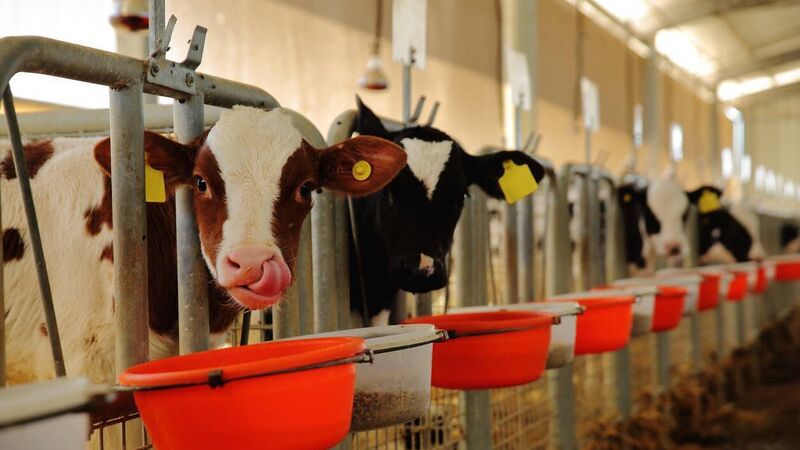
One of the EFSA recommendations is to almost double the space for housed calves.
Giving housed calves three square metres of space each could be coming down the road in the EU's long-awaited review of animal welfare legislation.
That is one of the scientific recommendations on which regulations may be based, said the Department of Agriculture's Stephanie Ronan, during a recent Teagasc Signpost webinar.
The Superintending Veterinary Inspector in the DAFM's Animal Welfare Division said the EU committed in 2020 to reviewing animal welfare, on the grounds that it improves health and food quality, and reduces the need for medication.
The European Food Safety Authority (EFSA) was asked by the EU Commission for scientific recommendations. Most of those recommendations have been published, as the scientific basis for new rules.
Along with nearly doubling the space for housed calves, another EFSA recommendation is increasing milk fed to calves in the first weeks, to 20% of their body weight.
A number of recommendations seem to be aimed at the veal industry, such as no cages or single pens, and calves in groups of two to seven in their first week, and fed long-cut roughage from two weeks on, getting at least one kg fibre per day (a significant increase compared to current rules).
There is increased emphasis in the EFSA recommendations on bedding and water requirements.
But Stephanie Ronan said, “It’s very much up in the air as to what will happen”. The DAFM Animal Welfare Division Superintending Veterinary Inspector added that a transition period would be provided to allow systems to adapt to whatever new legislation emerges.
During the webinar, her DAFM colleague Robert Leonard outlined the TAMS supports in the area of calf welfare available to farmers.
Stephanie Ronan said: “Calf welfare is one of our key priorities, unweaned calves, particularly male dairy calves.
"We put a lot of resources into doing checks and inspections and so on to ensure calf welfare is optimal, which for the most part it is”.
The current Irish regulations require all necessary steps for welfare, and to avoid unnecessary pain or suffering. Calves can be kept in individual pens only up to eight weeks old. “The pen must be at least the length of the calf, and the width of the pen must be at least equal to the height of the calf at the withers”.
Calf pens cannot have solid sides. "Calves need to have both visual and tactile contact with other calves,” said Stephanie Ronan. This is particularly a veal industry issue.
The minimum floor space for group penned calves of up to 150kg is 1.5 square metres each; 1.7 square metres for 150-220kg; and 1.8 square metres for calves over 220kg.
“The legislation also specifies calves must have space to lie down, to rest, to stand up, and to groom,” explained the DAFM official. “And they should be able to do this at the same time, in a synchronised manner” Tethering is not allowed, with the exception of one hour for feeding, but this is typically not an issue on Irish farms.
Calf housing materials cannot be toxic, or have sharp edges, they should be capable of being cleaned and disinfected. Floors should be smooth and non-slip, providing a clean and comfortable lying area.
“Bedding must be provided, at least for calves under two weeks". As calves spend up to 80% of their time lying down, bedding is extremely important in reducing the calf’s heat and energy loss and for its ability to absorb urine, keep the calf dry, and prevent slips and falls.
About 15 centimetres of good quality straw bedding is recommended. Straw should be prioritised for young calves, under eight weeks.
Fresh water must be available to all calves from two weeks old, and continuously available if calves are sick, or the weather is hot.
“Research shows that even if calves have ad-lib access to milk, they still require and will drink water. Water’s also very important for rumen development”, said Stephanie Ronan.
Bovine colostrum must be given as soon as possible after birth, ideally in the first two hours, and at least within six hours. “The current industry recommendation is to provide about 15% of a calf’s body weight in milk per day via a teat, because a teat is a more natural way of providing feed”, said the DAFM official.
Suckling calves typically feed four to nine times a day. Calves of four to six weeks require at least two milk feeds per day, the day’s quota cannot be ingested in one feed. “Once-daily feeding is not permitted up to four weeks”.
Most calves will take little solid feed up to about three weeks.
Calf housing should be well-lit for at least eight hours, with a night-time period of darkness.
“Air circulation, dust levels, temperature, relative humidity and gases must be kept within limits not harmful to the calves. The importance of ventilation can’t be overstated. Good ventilation is vital for the removal of bacteria and other bugs and the removal of noxious gases and of dust”.
"The legislation stipulates that calves, when they’re housed, must be inspected twice a day”, she said. “Sick or injured animals must be treated without delay, veterinary advice sought if they’re not responding, and they must be isolated if needed, with dry and comfortable bedding”.
Feed, water and light should also be available in the isolation pen. While it is not specified in legislation, the isolation area ideally should not share the same air space as the other calves, to reduce airborne infection. A separate entrance is also recommended, if feasible.
